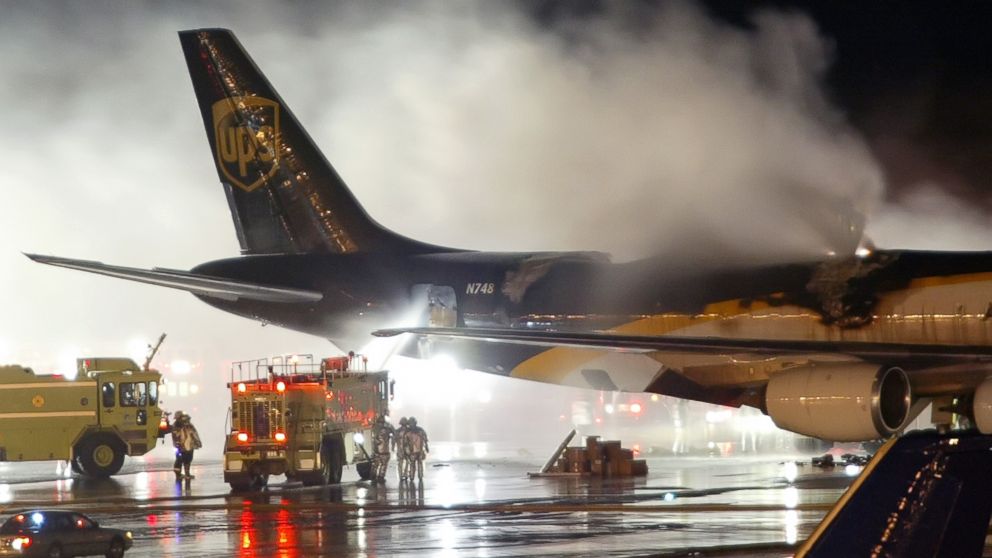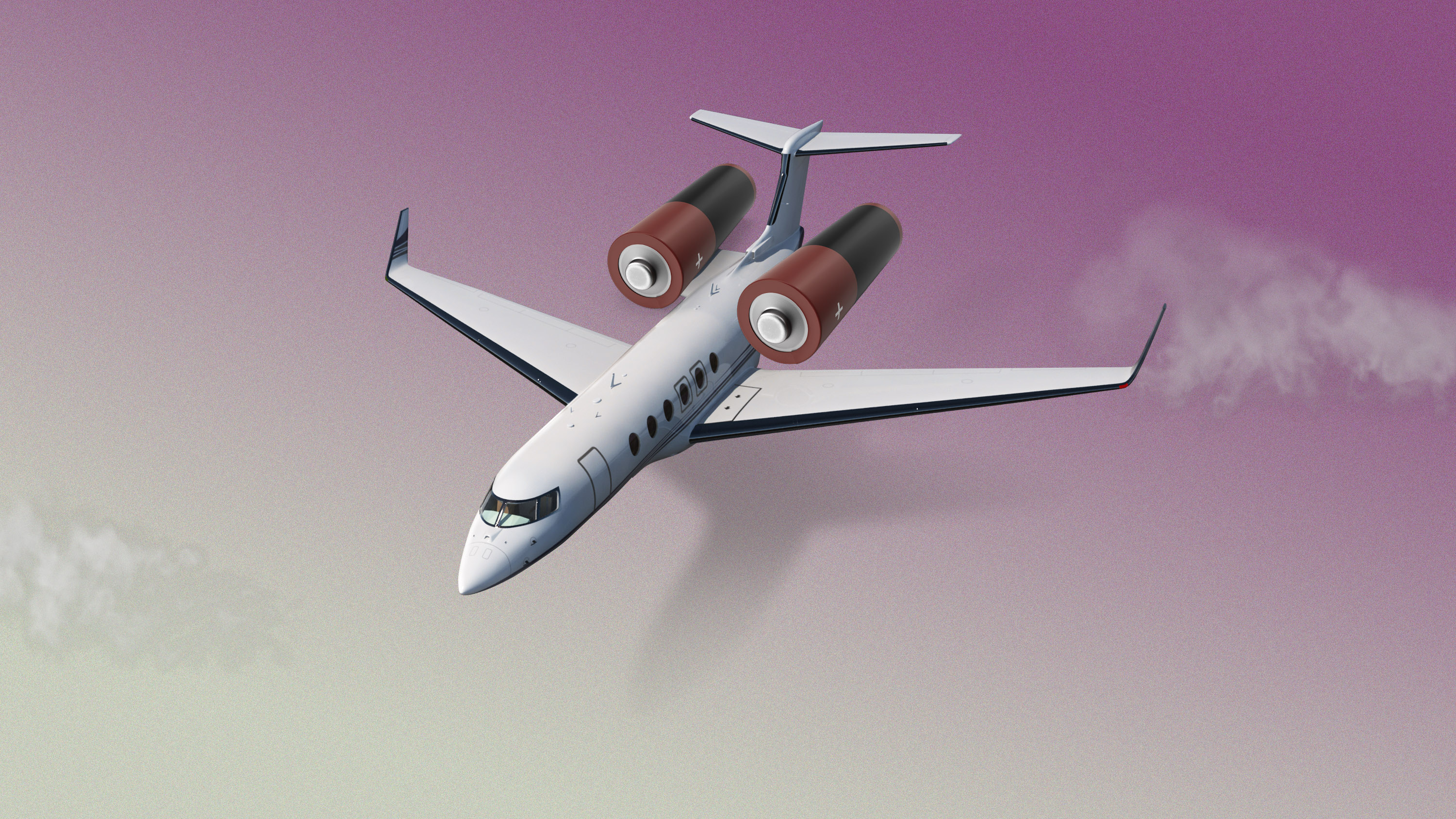Yes, you can bring lithium batteries on a plane. Proper packaging and quantity limits allow lithium batteries in carry-on and checked baggage.
Air travel has become essential to our daily lives, connecting people worldwide. While packing for a flight, knowing what items are allowed and what is restricted is vital. One common concern many individuals have is regarding lithium batteries.
These batteries power numerous electronic devices, including smartphones, laptops, and cameras. Hence, it is crucial to understand the rules and regulations associated with carrying lithium batteries on a plane.
Fortunately, lithium batteries can be brought on a plane. However, a few guidelines must be followed to ensure safety and compliance. This article will provide information on traveling worry-free with lithium batteries.

Credit: abcnews.go.com
Understanding Lithium Batteries And Air Travel
Lithium batteries are allowed on planes as long as they are in carry-on baggage. Battery terminals must be covered, and spares must be kept in original packaging. Devices with these batteries, such as power banks and cameras, should be separated. As per airline policies, consult before your trip.
Lithium Batteries 101
Before we dive into the regulations surrounding lithium batteries and air travel, let’s understand the basics. Lithium batteries are rechargeable power sources in devices like smartphones, laptops, cameras, and electric vehicles.
These batteries have a high energy density, are lightweight, and are convenient for everyday use. However, as with any electronic device, there are specific rules and guidelines to follow when traveling with them.
Air Travel Regulations
When bringing lithium batteries on a plane, it’s essential to be aware of the regulations to ensure a hassle-free journey. The International Civil Aviation Organization (ICAO), the governing body for air travel, has set specific rules to ensure the safety of passengers and crew. These rules primarily concern the size and quantity of lithium batteries permitted in carry-on and checked baggage.
In-cabin Restrictions
Lithium batteries that fall under 100 watt hours (Wh) are generally allowed in carry-on luggage without special restrictions. Most personal electronic devices, such as smartphones and tablets, contain batteries of this size and can be safely brought on board.
However, it’s always prudent to check your specific airline’s regulations, as they may have varying guidelines.
If you’re carrying spare lithium-ion batteries, protecting their terminals with insulating tape or keeping them in plastic bags to avoid short circuits is essential. This precautionary measure prevents accidental discharges that could cause a fire.
Checked Baggage Restrictions
You must obtain airline approval before travel for lithium batteries exceeding 100Wh but not exceeding 160Wh. These batteries are typically found in larger electronic devices like laptops or professional-grade camera equipment.
You may need to declare these batteries at check-in and comply with any specific handling procedures instructed by the airline.
TIP: The best action is to contact your airline before your journey to ensure compliance with their regulations and minimize any potential inconveniences at the airport.
Stay Informed And Prepared
Regarding air travel, following the rules regarding lithium batteries is crucial. Understanding the nuances of lithium batteries and the associated air travel regulations can ensure a smooth experience and avoid unnecessary delays or complications during your journey.
By adhering to the ICAO guidelines, safeguarding your batteries, and staying informed about your airline’s specific policies, you can enjoy the convenience of your electronic devices while traveling without any worries.
Types Of Lithium Batteries
When flying with lithium batteries, it is essential to understand that there are different types of lithium batteries, each with its own rules and regulations. The two main types of lithium batteries commonly used are lithium-ion and lithium-metal.
Lithium-ion Batteries
Lithium-ion batteries are the most common type of lithium batteries used nowadays. They are widely used in smartphones, laptops, and tablets. These rechargeable batteries provide high energy densities, making them popular in the technology industry.
When carrying lithium-ion batteries on a plane, the regulations vary depending on their size. According to the Federal Aviation Administration (FAA), you can bring lithium-ion batteries with a capacity of up to 100 watt-hours (Wh) in your carry-on baggage—however, batteries with a capacity between 100 and 160 Wh can be carried with airline approval. You must check with your airline for their specific rules and regulations regarding lithium-ion batteries.
Lithium Metal Batteries
Lithium metal or non-rechargeable lithium batteries are commonly found in devices such as cameras, watches, and calculators. These batteries are lightweight and provide a stable power supply for a longer duration.
Unlike lithium-ion batteries, lithium-metal batteries have stricter regulations regarding airline travel. According to the FAA, you can bring lithium metal batteries with a capacity of up to 2 grams (g) in your carry-on baggage.
However, batteries with a capacity between 2 and 8 g can be carried if correctly installed in equipment. Again, confirming the precise rules with your airline on carrying lithium metal batteries is crucial.
In conclusion, understanding the types of lithium batteries and their corresponding regulations is essential when flying with them. Whether you have lithium-ion or lithium-metal batteries, always comply with the airline’s rules and guidelines to ensure a smooth and hassle-free travel experience.
Guidelines For Bringing Lithium Batteries On A Plane
Lithium batteries are widely used to power numerous electronic devices, but travelers must be mindful of regulations when bringing these batteries on a plane. Understanding the guidelines for carrying lithium batteries is essential to ensure a smooth and hassle-free travel experience.
Carrying In Carry-on Vs. Checked Luggage
When it comes to lithium batteries, it’s crucial to distinguish between carrying them in carry-on and checked luggage. The Federal Aviation Administration (FAA) mandates that spare lithium batteries with more than 100 watt hours (Wh) are prohibited in checked baggage but are allowed in carry-on luggage.
On the other hand, batteries with less than 100 Wh can be packed in either carry-on or checked luggage.
Packaging Requirements
Proper packaging of lithium batteries is essential to ensure safety during air travel. All loose lithium Each battery needs to have a protective measure to avoid short-circuiting, often through either utilizing a battery case or the original retail packing.
Protecting the battery terminals is essential to avoid contact with metal objects that could cause a fire. Additionally, spare batteries must be well-secured to prevent movement and damage during the flight.

Credit: m.youtube.com
Safety Measures And Precautions
Bringing lithium batteries on a plane requires adherence to specific safety measures and precautions to ensure a smooth and incident-free journey. It is crucial to be well-informed about the regulations put in place by aviation authorities to keep both passengers and crew members safe.
This section will discuss essential safety guidelines for preventing short circuits and dealing with damaged batteries.
Preventing Short Circuits
Preventing short circuits is vital to minimize the risk of fires or explosions caused by lithium batteries. Follow these safety measures:
- Avoid carrying loose batteries in your carry-on or checked baggage.
- Ensure batteries are securely installed in electronic devices.
- Tape or cover battery terminals to prevent accidental contact.
- Use a battery case or a plastic bag to isolate batteries from conductive materials.
- Avoid placing batteries in overcrowded or scorching areas.
Dealing With Damaged Batteries
Handling damaged lithium batteries is crucial for air travel safety. Here are the necessary steps to take:
- Inspect batteries before packing; if any signs of damage are noticed, do not bring them on the plane.
- In case of battery leakage, carefully isolate the affected battery using non-conductive gloves or insulating material.
- Place the damaged battery in an airtight container to prevent further leakage or exposure to other objects.
- Inform the airline staff about the damaged battery immediately upon boarding the aircraft.
By adhering to these safety measures and precautions, you can ensure a safe and hassle-free experience when bringing lithium batteries on a plane. Remember, following the guidelines not only protects you but also contributes to the overall safety of the flight.
Navigating International Travel And Restrictions
Lithium batteries are allowed on planes, but there are certain restrictions to keep in mind. They must be carried in carry-on baggage, not checked luggage, and there are limits on the size and quantity. Be sure to check with your airline before your trip to stay informed.
Understanding Different Countries’ Regulations
When traveling internationally with lithium batteries, it’s essential to understand that each country has regulations and restrictions. This means that what may be allowed on a plane in one country might not be permitted in another.
It’s essential to be aware of these regulations before embarking on your journey to avoid potential conflicts or issues at the airport.
Some countries have stricter rules regarding lithium batteries due to safety concerns. For example, in the United States, the Federal Aviation Administration (FAA) has guidelines to protect passengers and crew members from the potential risks associated with lithium batteries.
These guidelines include restrictions on the size and quantity of lithium batteries that can be carried in both carry-on and checked baggage.
Similarly, other countries such as Australia, Canada, and the United Kingdom have their regulations, which may vary in battery size or quantity allowed. Researching and familiarizing yourself well before your departure with the specific regulations of the country you are traveling to is essential.
Exceptions And Special Cases
While general regulations apply to lithium batteries on planes, some exceptions and exceptional cases exist. These exceptions often depend on the type of battery, its capacity, and how it is carried.
For instance, smaller lithium batteries with 100 watt-hours or less capacity are usually allowed in carry-on baggage.
However, larger batteries are typically restricted to checked baggage. Exceptional cases may arise for those carrying medical devices powered by lithium batteries, as they may require specific documentation or advance notice to the airline.
It’s important to note that even if batteries are allowed on a plane, they must still be carried in compliance with applicable safety guidelines. This may include protecting the battery terminals or covering them to prevent short-circuiting.
Below is a summary of some general guidelines for traveling with lithium batteries:
| Type of Battery | Carry-On | Checked Baggage |
|---|---|---|
| Small Lithium Batteries (100 watt-hours or less) | ✅ | ✅ |
| Large Lithium Batteries | ✅ | ✅ |
| Lithium Batteries in Medical Devices | ✅ | ✅ |
Special conditions may apply. Check with the airline or local authorities for specific regulations.
Remember, it’s always best to check with the airline you are traveling with and the relevant authorities of the country you are visiting to ensure compliance with all regulations. Being well-informed and prepared allows you to enjoy your international travel experience without unnecessary hassles or complications.

Credit: www.technologyreview.com
Can You Bring Lithium Batteries On A Plane Checked
You can generally bring lithium batteries on a plane in your checked baggage. However, there are some regulations and guidelines you should be aware of to ensure safety and compliance:
- Carry-On vs. Checked Baggage:
- Carrying lithium batteries in your carry-on baggage is generally recommended rather than checked baggage. This is because if a fire occurs, it can be quickly detected and addressed in the cabin.
- Battery Type and Size:
- Small consumer-sized lithium-ion batteries (up to 100 watt-hours) are allowed in carry-on baggage without advance approval from the airline.
- For batteries between 100 and 160 watt-hours, you need airline approval.
- Batteries more significant than 160 watt-hours are not allowed in carry-on baggage.
- Quantity Limits:
- There may be limits on the number of spare batteries you can carry. Check with your airline for specific regulations.
- Proper Packaging:
- Ensure that each battery is adequately packaged to prevent short circuits. Original packaging is often recommended. You can also use a plastic bag or protective case for each battery.
- Terminals Covered or Taped:
- To prevent short circuits, it’s advisable to cover the battery terminals with tape or place each battery in a separate plastic bag.
- Declare if Necessary:
- Some airlines or countries may have specific regulations, and checking and declaring your batteries is essential if required.
- Lithium Metal Batteries:
- There are different regulations for lithium metal batteries, and these are usually less common in consumer electronics.
Always check with your airline and relevant authorities, as regulations may vary. Knowing these guidelines is essential to ensure a smooth and safe travel experience.
Frequently Asked Questions For Can You Bring Lithium Batteries On A Plane
Q: Are Lithium Batteries Allowed On Airplanes?
A: Yes, lithium batteries are allowed on airplanes. However, some specific rules and regulations must be followed for safe transportation. Before traveling, you must check with the airline for specific guidelines and restrictions.
Q: How Should I Pack Lithium Batteries For Air Travel?
A: When packing lithium batteries for air travel, it is recommended to keep them in their original packaging or place tape over the battery terminals to prevent short circuits. Packing them in a carry-on bag instead of checked luggage is also advisable for easier accessibility and to minimize the risk of damage.
Q: What Is The Limit For Bringing Lithium Batteries On A Plane?
A: The limit for bringing lithium batteries on a plane varies depending on the type of battery. Generally, lithium metal batteries with a capacity of up to 2 grams are allowed in both carry-on and checked baggage. Lithium-ion batteries with a capacity of up to 100 watt-hours are also allowed, but those exceeding this limit may require approval from the airline.
Conclusion
It’s essential to adhere to the airline and TSA guidelines when traveling with lithium batteries. Insulating batteries and packing them in carry-on luggage can prevent potential safety risks during air travel.
By staying informed and following regulations, passengers can ensure a smooth and stress-free journey without any complications regarding lithium batteries.

I am a technology Specialized writer and blogger based in the USA & UK. I have four years of experience in Technology, Social Media and all types of Battery’s like Solar Battery,Car Battery,Lithium Battery etc. So I work on solving these issues and give various tips on these issues.
